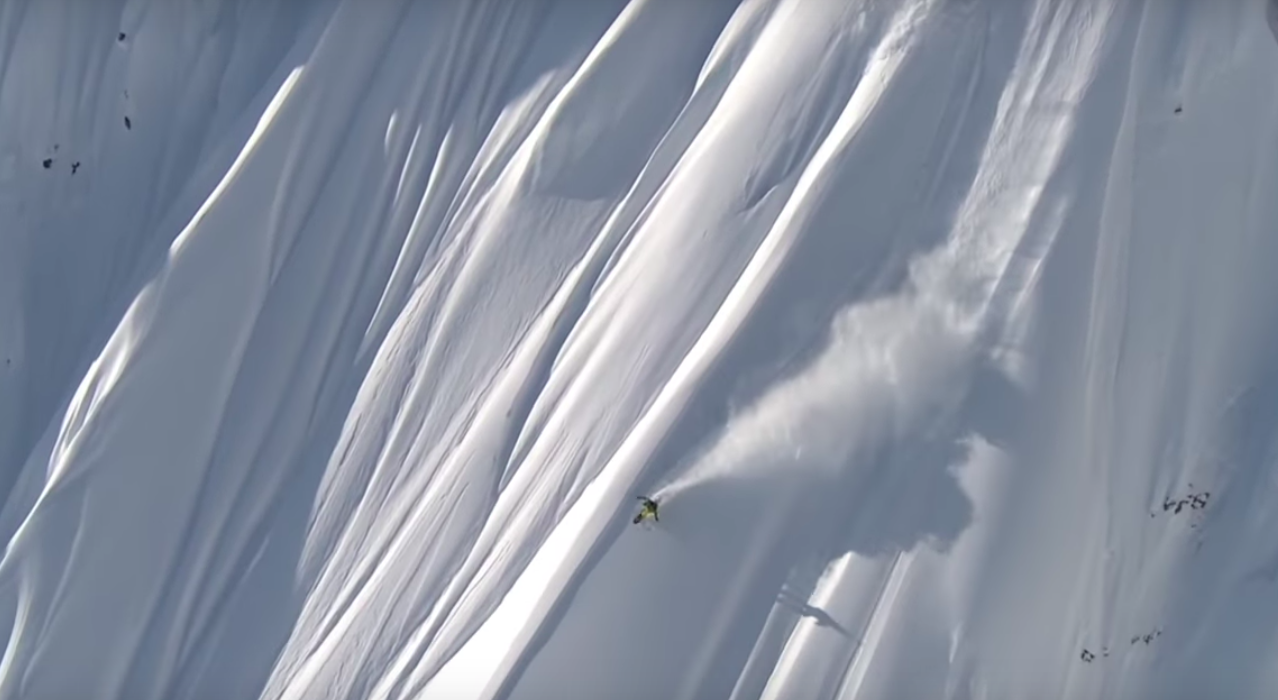With many sports, you can imagine the emotion that the athlete experiences bringing off a difficult move, scoring a goal, winning a game. You feel what the pros feel, because at some point in our lives, we’ve all scored goals and won games. But then there are sports which are so far from our own scale of logic that we can find ourselves asking, “Is this even real?”
To some viewers, the sport of freeriding shown in Twenty will resemble the second. It’s the snow equivalent of BASE jumping; something that defies comprehension, unless you yourself do it. Where risk is great but the reward, presumably, is even greater. This 45-minute encounter with freeriding will undoubtedly divide even many extreme adventurers. Is there a reward so great that such risk is acceptable?
Twenty documents two decades of freeriding — extreme adventure skiing and snowboarding — by action sports filmmaker Guido Perrini. Through this long view, he shows how the sport and those in it, including himself, have evolved. Perrini’s early career included shooting aspects of ski bum life, like the dishwasher at work. Over the years, extreme skiing changed from simply “skiing harder and jumping off cliffs” to a more sophisticated sport that, nevertheless, always pushed limits and sometimes transgressed them. As it evolved, so did Perrini’s niche.
In 1998, he met pro riders Loris and Nicolas Falquet (also known as Huck and Chuck, or the Falquet Brothers). From that moment, Perrini focused on freeriding. Twenty is a loving epistle to that career. His candid interviews are the narrative to his own visual masterpieces.

The Falquet Brothers declared that their careers’ most defining moment was their first shoot with Perrini. And for Perrini himself, the sport had a clear evolution that included regular tragedy. “Many things happened that I didn’t question too much,” he says frankly. Among the most tragic was the loss of Estelle Balet. At the age of 21, she was the youngest freeriding World Champion. She was killed in an avalanche just two weeks after winning her second title.
“Then in the next 10 years, I really started to question,” says Perrini. Even the world’s best riders allude to the sport’s dangers during their short interviews. Avalanches are the most obvious danger, but the sport’s perennial “small margin of error” — a missed turn, a lost edge — can become a deadly event. It’s often said that extreme skiing begins where if you fall, you die.
Some participants, like Xavier, claim that the sport gives so much back that the risk is worth it. Xavier has a unique perspective on risk. To avoid avalanche danger, he decides to ride ice; there are no avalanches on ice, after all.
The film canvasses its pros for the top five freeriding destinations in the world. While everyone praises Japan for its snow quality, culture and people, the number one destination is Antarctica. On this wildest continent, Perrini’s talented eye captures some of Twenty’s best footage.

He pans over glaciers, mountainscapes and ice-choked seas while skiers navigate down sheer faces beside bright blue hues of ice, while penguins waddle far below. In many of the sequences, the commentary accurately describes the rider’s situation as “crazy”.
Each of the riders featured foresees a different future for him or herself. Some feel lucky to have had a career in an extreme sport and come out relatively unscathed. They imply that for them, it’s time to step back. Others desire to ramp up their commitment still further, by taking their sport to mountains far bigger and wilder than the Alps. All realize, as does Perrini, that their sport ultimately puts them at the mercy of the cold, uncaring mountains.






